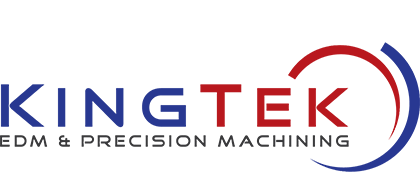Frequently Asked Questions
The history of Electrical Discharge Machining (EDM) techniques go as far back as the 1770s when it was discovered by an English Scientist. However, Electrical Discharge Machining was not fully taken advantage of until 1943 when Russian scientists learned how the erosive effects of the technique could be controlled and used for machining purposes. EDM is at its simplest defined by the principle of erosion by electrical discharge. There are three types of EDM that operate under that simple principle but their history, methods and applications are all different. EDM is the answer for high accuracy, tight tolerances and precision machining requirements where the use of conventional milling or other material removal techniques are difficult and/or impossible.
Known by many names: spark machining, arc machining, die sinking, wire burning or wire erosion, the EDM process is conceptually very simple. An electrical current passes between an electrode (copper wire or pre-shaped graphite) and a conductive workpiece which are separated by a dielectric liquid. The dielectric fluid acts as an electrical insulator, and the resulting spark between the work-piece and the electrode erodes the material to form a desired final shape.
There are 3 different types of EDM:
-
-
- Wire EDM is an electro-thermal process that uses a thin metal wire (copper, .006-.012”) submerged in deionized water to cut through conductive metals. Wire EDM machines create an electrical discharge between the metal wire and the workpiece—using heat from the electrical sparks to cut or “burn” through the material.
- Sinker EDM (also known as traditional or Ram EDM) uses pre-machined electrodes, dielectric fluid and spark erosion to remove metal material from a workpiece. With this process, a custom shaped copper or graphite electrode is used to machine the required pattern or configuration into any type of conductive material.
- Hole Drilling (or Popping) EDM uses a small (Ø .006 - .050”) tube electrode to drill holes in hardened materials. Drilling EDM machines use high-pressure dielectric fluid (typically deionized water) through the tube to enable cutting operations and flush away any eroded debris. The spark gap is created in the same way as the other EDM processes.
-
Electronic Dance Music (EDM) you say? Although they share the same acronym; one has nothing to do with the other. And even though not a necessary part of the EDM process, we at King Tek do love music!
